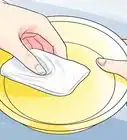wikiHow is a “wiki,” similar to Wikipedia, which means that many of our articles are co-written by multiple authors. To create this article, volunteer authors worked to edit and improve it over time.
There are 7 references cited in this article, which can be found at the bottom of the page.
This article has been viewed 137,047 times.
Learn more...
It happens to the best of us. “Just for a moment,” you turn away from your food as it cooks on the stovetop, only to discover, upon looking back, that the food and its respective cookware have burned. Burnt pots and pans do not cook food as evenly, and severely damaged cookware can even pose a health hazard. Even though accidents can happen to anyone, there are a few steps you can take to minimize your odds of burning your pots and pans.
Steps
-
1Use high quality pots and pans made of heavy materials. As the saying goes, “you get what you pay for.” Cheap cookware is made from low quality materials that do not heat as evenly and, as a result, these pans are the quickest to burn. Invest in finer quality cookware, instead.
- Three-ply pots and pans made with a stainless steel-aluminum-stainless steel composition are heavy and durable.
- It is also easy to prevent burning in cast iron cookware, as long as it is well-seasoned beforehand.
-
2Look for pots and pans with nonstick coatings. Older pans do not usually have a nonstick surface, but many newer pans are made with Teflon, a smooth, conductive material that food does not stick to quite as easily.Advertisement
-
3Make sure your stovetop is clean. Residue from spilled sauces, sugary syrups, and other food will burn if exposed directly to the heat of the stovetop burner. This will be a hassle to clean off your stovetop, but more to the point, it could also end up burning to the bottom of your pots and pans. Wipe your burners down and scrape off any burnt, stuck-on chunks of food before each use in order to spare your pots and pans.[1]
-
4Wipe down the exterior of your pots and pans before each use. It is possible that crumbs or other grime attached itself to the sides and bottoms of your cookware during storage. If these elements come into direct contact with the stove burner, they could end up burning onto the outside of the pan.
-
5Thoroughly season cast iron. If seasoned correctly, cast iron pots and pans are nearly stick-proof. Fat carbonizes in the pores of the metal. As a result, food cannot attach itself to the pans, which preventing it from burning the metal.[2]
- Coat the pan with lard or solidified bacon grease. You must use a solid fat. Do not use vegetable oil.
- Put the pan into an oven preheated to 250 °F (121 °C). Bake the pan for 15 minutes.
- Remove the pan from the oven and dump out excess, liquid grease.
- Place the pan back into the oven for another two hours.
- Remove the pan, and then repeat the process over once or twice more to make sure that the fat thoroughly seeps into the pores of the pan.
-
6Preheat oil in the pan before adding food. Any pan, regardless of the material, should be treated with oil before you begin the cooking process. Like solid lard, oil seeps into the pores of the metal when exposed to high temperatures, creating a sort of nonstick coating.
- Pour enough oil into the pan to provide a thin coating over the bottom. Heat it over medium to medium-high heat.
- Add food only after thin wisps of vapor appear. The oil must be this hot in order to create a seep into the metal thoroughly enough to prevent sticking.
-
7Use a burner that fits the pot or pan size. This is especially important for gas stoves, since flames that lick up along the sides of the pot or pan are more likely to cause liquids and solids to stick to the side. If you do not have a burner that fits the precise size of your cookware, opt for a burner that is slightly smaller over one that is too large.
-
8Heat sauces slowly. Spaghetti sauce, sugary syrups, cheese or dairy based sauces, and many other thick sauces are likely to burn quickly if heated too fast. Bring these sauces up to boiling slowly, starting them on a low to medium heat instead of a high heat. Only allow the liquid to boil as long as necessary according to your recipe's instructions.
-
9Stir frequently. Constant stirring is especially important in preventing sauces from sticking to your pots, but you should also stir, turn, and flip solid foods like meat and vegetables.[3] When food sits in one spot to long, the side that faces the metal is more likely to burn and leave behind a burnt residue.[4]
-
10Rotate the pot or pan. Some burners may not distribute heat evenly, especially if you have an old, worn out stove. Rotating your cookware prevents high heat from directing itself on one spot for too long.
-
11Try a “flame tamer.” A flame tamer, also known as a heat diffuser, is a metal plate that sits between your cookware and the burner. It controls the distribution of heat, leading to even cooking and thereby preventing excessive burning.[5]
-
12Deglaze burnt foods immediately. Even if you take as many precautions as possible, you may still end up burning food occasionally. You can reduce the likelihood of this food burning your pots and pans by deglazing the cookware immediately after you finish cooking with it.[6]
- Remove your used, empty cookware from the stove while it is still hot.
- Add 1 cup of cold water to the pot or pan.
- Return the cookware to the stove and heat the water over medium heat.
- Use a metal spatula to gently encourage burnt food to lift from the bottom. The heated water alone may be enough in many cases, but a metal spatula can assist you for more stubborn residue.
Community Q&A
-
QuestionMy gas stove burners are putting black soot on the bottoms of my pans. They are not cheap pans. What can I do?
 MicheleTop AnswererYour pots might be turning black because the heat is turned up too high or burning unevenly. If the flame is not heating evenly, you'll notice it's blue on the outside with a yellow core. If you see yellow, your air-to-flame ratio needs to be adjusted. Simply adjust your air intake valve until you see only blue in the flame.
MicheleTop AnswererYour pots might be turning black because the heat is turned up too high or burning unevenly. If the flame is not heating evenly, you'll notice it's blue on the outside with a yellow core. If you see yellow, your air-to-flame ratio needs to be adjusted. Simply adjust your air intake valve until you see only blue in the flame. -
QuestionHow do I remove burnt pork roast from the bottom of caphalon pan?
 Community AnswerUse olive oil or vegetable oil on the rough side of your sponge and scrub it like your using soap, then clean it regularly, it should come right off.
Community AnswerUse olive oil or vegetable oil on the rough side of your sponge and scrub it like your using soap, then clean it regularly, it should come right off. -
QuestionI purchased Teflon pans for cupcakes. They burn on the bottom. How do I prevent this?
 Community AnswerIf the nonstick is dark, turn down the temperature by 25 degrees Celsius and check for done-ness earlier than the listed baking time. The dark color means the pan will get hotter, which is causing the muffins to bake faster on the bottom.
Community AnswerIf the nonstick is dark, turn down the temperature by 25 degrees Celsius and check for done-ness earlier than the listed baking time. The dark color means the pan will get hotter, which is causing the muffins to bake faster on the bottom.
Warnings
- Never put cast iron or Teflon cookware in an automatic dishwasher, and avoid using abrasive cleaners or steel wool on these pieces, as well. Washing these pots and pans with coarse methods could damage them. As a result, food would be more likely to stick and burn.⧼thumbs_response⧽
Things You'll Need
- High quality cookware
- Lard
- Oil
- Metal spatula
- Heat diffuser or “flame tamer”
References
- ↑ https://www.bobvila.com/articles/how-to-clean-a-stovetop/
- ↑ https://www.seriouseats.com/2016/09/how-to-season-cast-iron-pans-skillets-cookware.html
- ↑ https://www.bonappetit.com/test-kitchen/cooking-tips/article/effed-it-up-stainless-steel-pans
- ↑ https://www.goodfood.com.au/recipes/how-to/how-to-stop-soups-and-stews-from-catching-on-the-bottom-of-the-pot-20180629-h1227h
- ↑ https://homesteady.com/info-7937755-can-pans-used-glasstop-ovens.html
- ↑ https://www.thekitchn.com/5-ways-to-clean-a-scorched-pan-252295
- https://www.bobvila.com/articles/how-to-clean-burnt-pans/
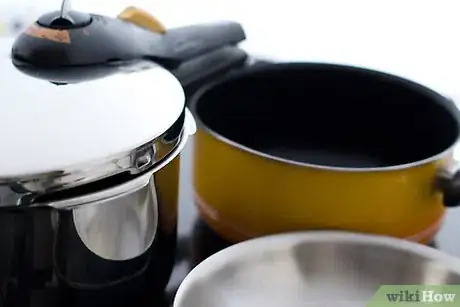
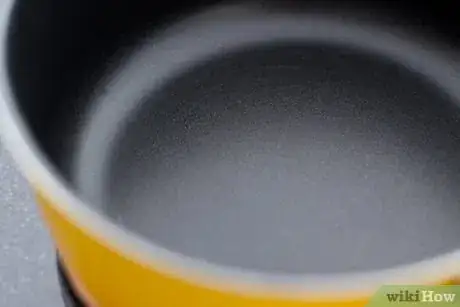
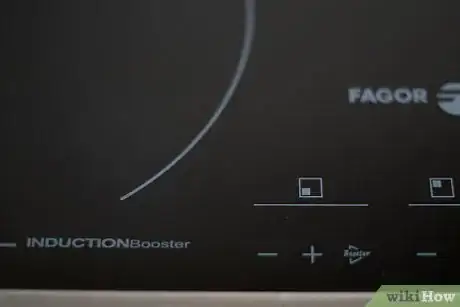

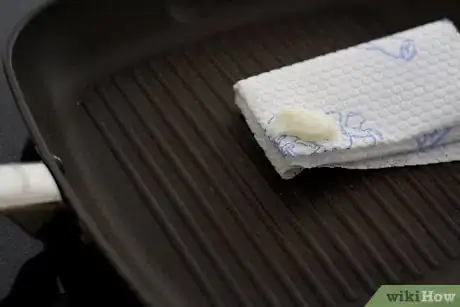
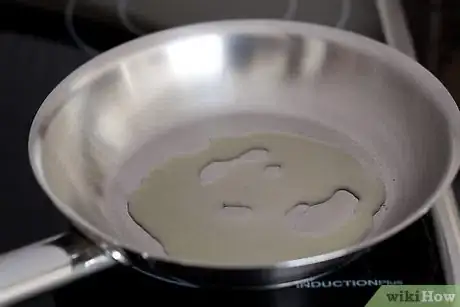
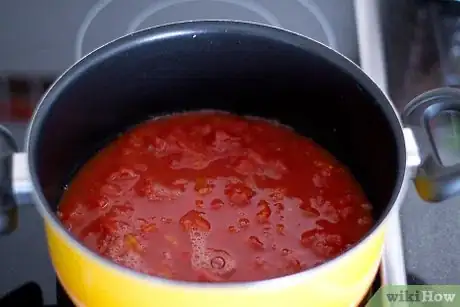

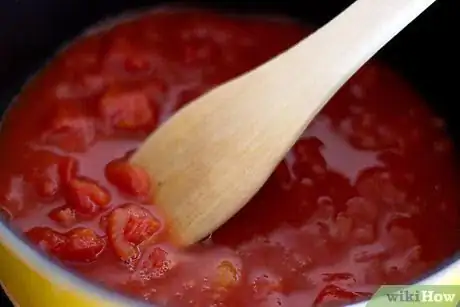
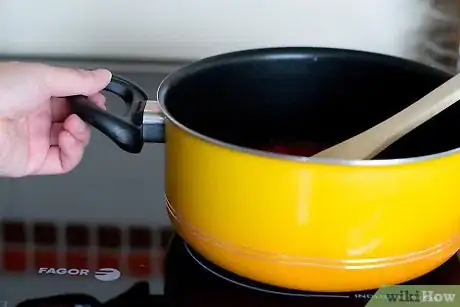
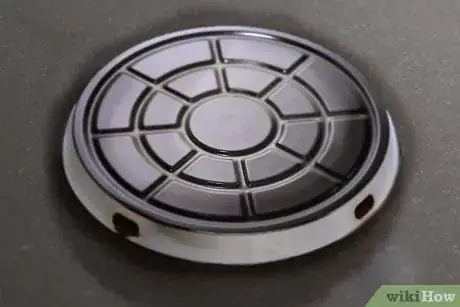
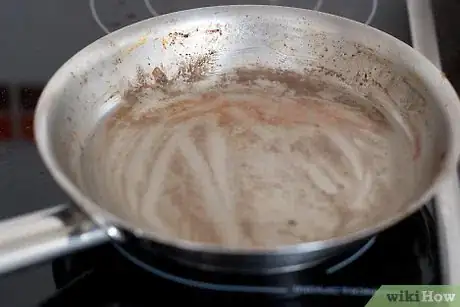

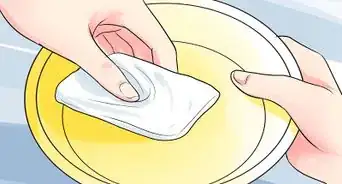
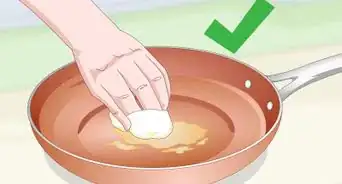
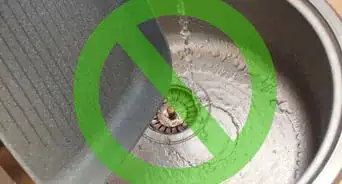
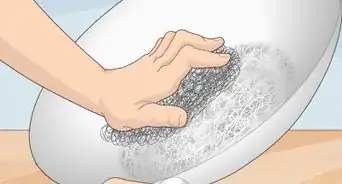
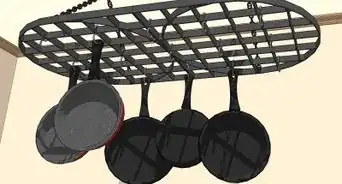






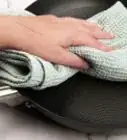
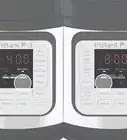
-Step-12-Version-2.webp)
